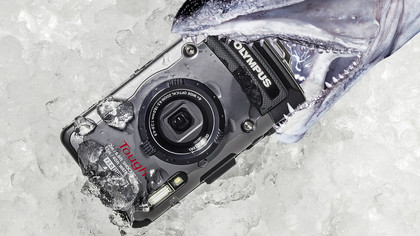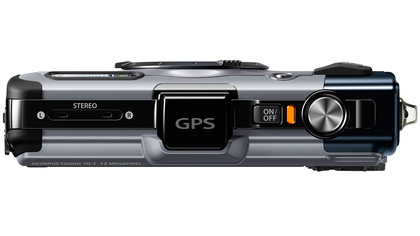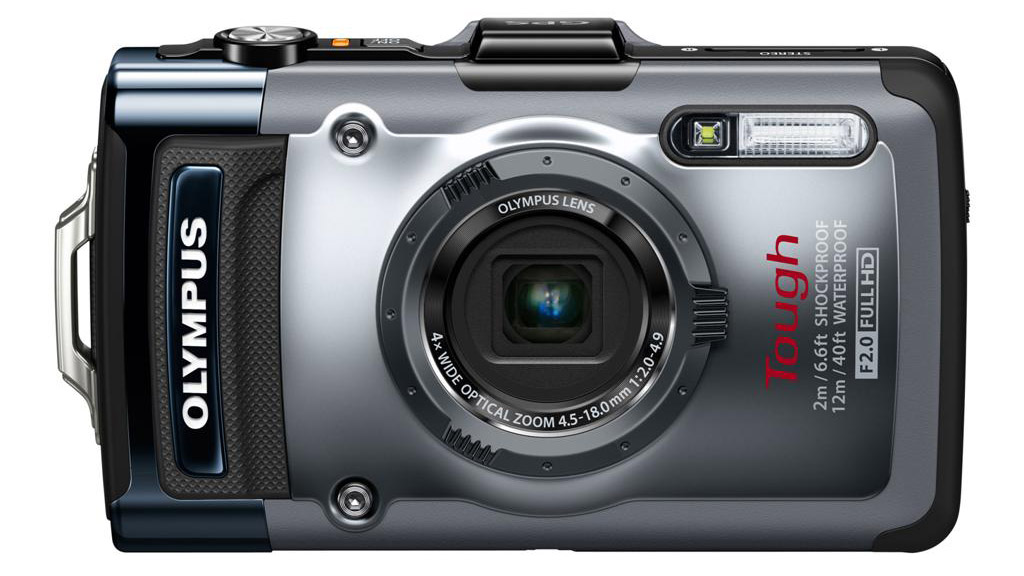TechRadar Verdict
Pros
- +
Rugged build and specs
- +
Fast f2.0 lens
- +
Great all-round image quality
- +
Excellent macro shooting
- +
Fast operation
Cons
- -
GPS drains battery
- -
Noise at high ISOs
- -
Video jerky at telephoto settings
- -
In-camera battery charging can be inconvenient
Why you can trust TechRadar
Olympus has a long-running reputation for being at the forefront of 'life-proof' compact camera development, frequently being the first to implement new technologies and lead the way in terms of the amount of punishment its cameras can take. Yet again – with the launch of the Tough TG-1 – Olympus has excelled itself.
With the recent increased level of competition in this niche sector of the digital camera market, Olympus has pulled out all the stops with its latest development, to ensure that its Tough series of camera remains at the top of the pack. Setting a new precedent with its impressive specifications, the Olympus TG-1 raises the bar with its tougher-than-ever adventure-proof features.

The new camera boasts significantly improved waterproofing features, being capable of resisting water ingress and coping with the pressure right the way down to a depth of 12m (40ft). It's also freezeproof to -10C (14F), crushproof to 100kg (220lbs) and shockproof if dropped from a height of up to 2m (6.6ft).
The Olympus TG-1 is also dustproof, incorporates an Electronic Compass, a Manometer and boasts built-in GPS too.
Olympus Tough TG-1 at a glance
Sensor:
12MP 1/2.3-inch BSI-CMOS
Sign up for breaking news, reviews, opinion, top tech deals, and more.
Lens:
4x optical zoom (25 - 100 mm equivalent), f/2.0-4.9
LCD Screen:
3-inch, 610,000-dots, OLED
Focus modes:
Contrast Detection: Face Detect AF, iESP Auto, Spot AF, AF Tracking
Dimensions:
111.5mm x 66.5mm x 29.1mm (4.4 x 2.6 x 1.1 inches), 230g (8.1oz)
On paper, the Olympus TG-1 certainly looks to have the potential to be a market leader in terms of its ruggedness. But Olympus also claims to have taken steps to ensure that image quality, which – as we've seen in the past – can sometimes become a secondary concern in the development of these types of compact cameras, was of equal significance when developing the new camera.
To that end, the manufacturer promises "DSLR image quality" from the 12MP BSI-CMOS sensor and bright f/2.0 lens. We'll see how these claims stand up in our tests.
Build quality and handling
The Olympus Tough cameras we've tested in the past have all lived up to their name, and the Olympus Tough TG-1 continues this tradition. It may have a plastic outer shell, but the camera feels very solid, reassuringly weighty and nicely balanced in the hand.
A plethora of exposed bolts and touches such as the double-locking mechanisms on the hatches that protect the memory card/battery compartment and the various ports are all reminders of the Olympus TG-1's superb level of build quality and protection.

Buttons are well proportioned and logically positioned, with the fact that each one is raised away from the camera body making it simple to locate and operate each one.
The only criticism we might have made in this respect is that perhaps the controls on the back panel are a little too closely clustered together. This didn't present any issues for us during normal use, but it has the potential to make the camera a little more difficult to operate with accuracy while wearing thick gloves, or underwater, for instance.

With this in mind, Olympus has thankfully incorporated its innovative Tap Control feature into the Olympus TG-1's menu options, enabling you to perform certain tasks – including altering some settings and navigating through menus/images in playback mode – by gesturing with and/or tapping the sides/top/bottom of the camera.
Olympus seems to have tightened up the reflexes of this feature, making it a pretty effective alternative method of operation.
